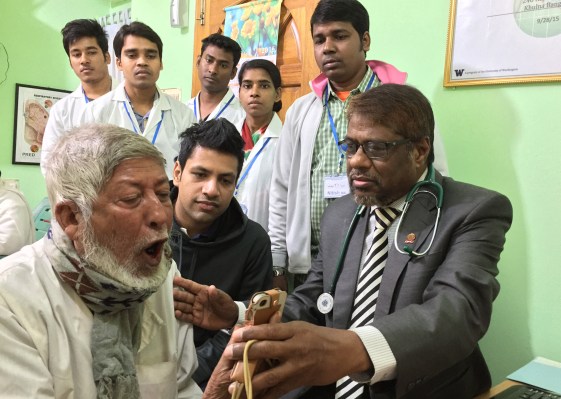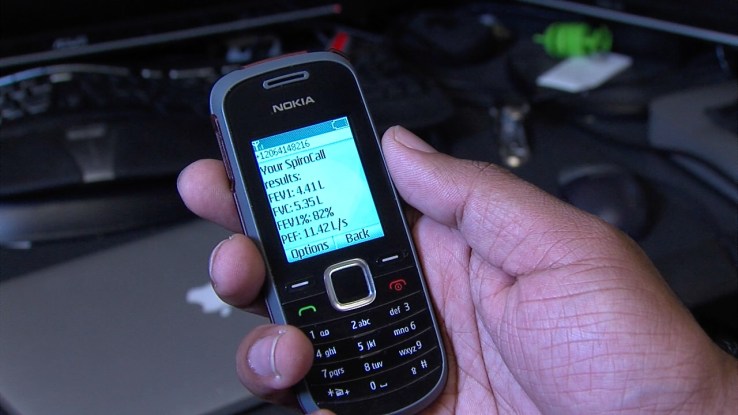Sometimes you see an application of technology that’s so innovative and helpful you can’t believe it exists in this age of narcissistic and short-sighted startups. SpiroCall, a service that lets anyone in the world call a toll-free number and have their lung health evaluated over the phone, seems too good to be real — but it’s real, and it’s good.
Lung disease causes hundreds of thousands of deaths per year, and chronic conditions like asthma affect millions more — and the problem is worse in remote areas, where the doctors and equipment needed to detect such conditions are difficult to reach, if they’re present at all.
“There’s a real need to have a device that allows patients to accurately monitor their condition at home without having to constantly visit a medical clinic, which in some places requires hours or days of travel,” said Mayank Goel, a doctoral student on the project team at the University of Washington, in a news release.
SpiroCall replicates the functioning of one of the key tools in assessing lung function — the spirometer. By measuring how much air the lungs hold, how much they expel and how they act and sound while they do so, much can be determined. And the developers of SpiroCall made it possible to check all that just by breathing out into a regular phone.
“We wanted to be able to measure lung function on any type of phone you might encounter around the world — smartphones, dumb phones, landlines, pay phones,” said Shewak Patel, a UW professor on the team.
In 2012, when the project was just starting, it was a smartphone-only app. But over the last few years the team has taken the data from more than 4,000 patients in the U.S., India and Bangladesh and made the service, essentially, cloud-based.
Users call a 1-800 number and, when prompted, simply exhale hard, emptying their lungs of air. This sound is analyzed at a central location and the necessary statistics are returned to the phone in the form of a text. That’s really all there is to it.
In tests, the readings came within 6.2 percent of readings from a commercial spirometer, which is within the accepted margin of error. A 3D-printed “whistle” was also designed to amplify the exhalations of people who are too ill to make much effort, or if the microphone isn’t sensitive enough.
“The variation in phone/mic quality definitely affects the performance of the system, but we perform regular diagnostic tests,” wrote Goel in an email to TechCrunch. The system needs to know the make and model of the phone, but that’s simple to address.
If this sounds like the kind of thing that can and should be deployed worldwide — you’re right! The team is hard at work on making that happen, but medical devices can’t be hurried out.
“Our current clinical trials are laying the groundwork for our FDA 510(k) clearance. We expect to start the formal data collection for the clearance later this year,” wrote Goel. “There is a significant amount of commercial interest around the technology in terms of licensing as well as collaboration.”
It certainly has the makings of a successful university spin-off company, but it’ll be some time before it can be deployed in anything other than an experimental capacity.
The team will present its most recent paper — detailing the process of analyzing a patient’s breathing over the phone and all its attendant algorithms and noise reduction techniques — at the Association for Computing Machinery’s CHI 2016 conference this weekend. You can read it ahead of time here.

